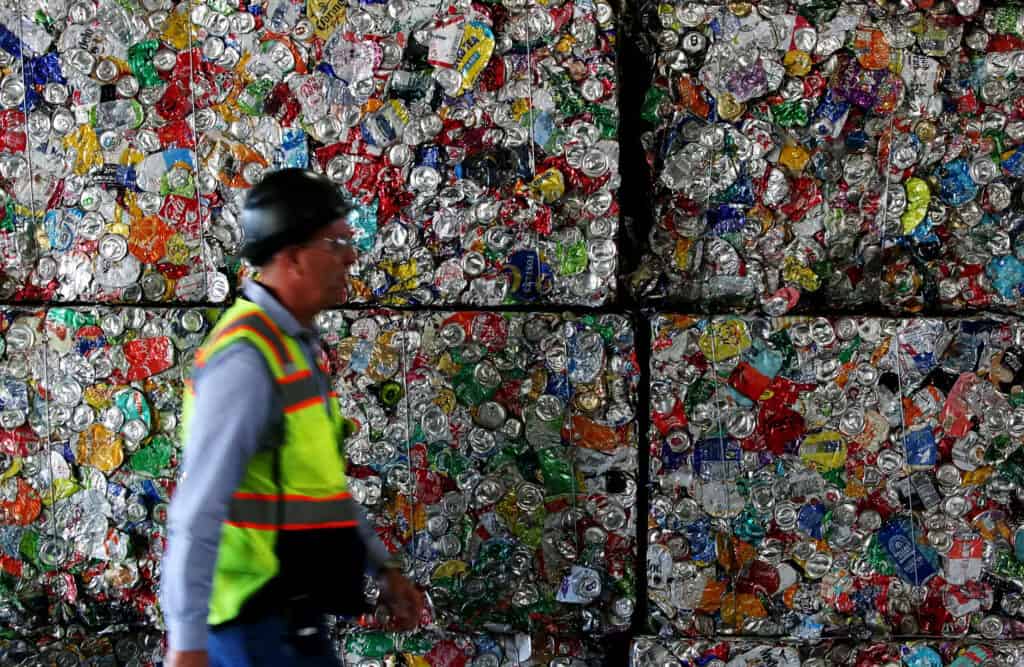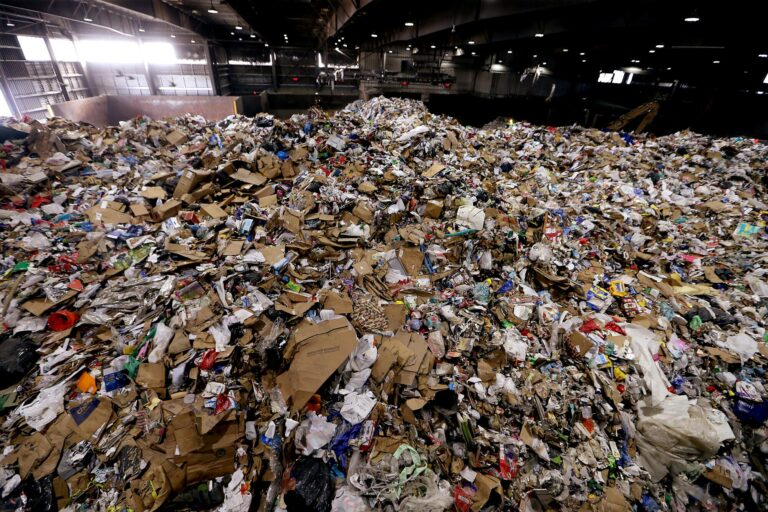Photo: A huge mountain of trash is piled up inside the cavernous Athens material recovery facility in Sun Valley on Dec. 28. (Luis Sinco / Los Angeles Times)
‘Twas the week after Christmas, and in a quiet corner of the San Fernando Valley, lines of waste collection trucks waited to offload their goods onto a growing mountain of garbage.
Here at the Athens Materials Recovery Facility in Sun Valley, cardboard boxes careened down conveyor belts, empty bottles and cans flew through crushers and sorters, and hand crews sifted through soggy recyclables.
Wrapping paper, aluminum trays and Amazon logos were a near-constant among the detritus.
“We get a lot more boxes during this time of year for sure,” said Fabiola Martinez, an operations lead with Athens Services, which handles much of the waste hauling and recycling in Los Angeles and other nearby areas.
And then there is the cardboard — or what Johnson refers to as “the Amazon effect.”
According to waste haulers, managers and researchers, the holiday season provides a visible and tangible surge in trash. In L.A., the buildup is particularly acute after Christmas, when people begin to dispose of heaps of food, wrapping paper and shipping boxes. The city collected 2.04 tons of cardboard in December 2022 compared with 16.42 tons in January 2023, according to data provided by Los Angeles Sanitation & Environment. January also saw 96.78 tons of Christmas trees.

For waste haulers and recycling plant managers across the state, this tidal wave of rubbish brings its own peculiar risks and challenges. For environmentalists, this flood of cardboard and wrapping paper is Exhibit A for why Californians need to lead more sustainable lives, and consume less.
Robert Reed, spokesman for the Bay Area’s largest waste management company, Recology, said waste volume peaks in the three days after Christmas. Although, even in the weeks before and after, increased tonnages are visible at both the company’s recycling and compost facilities.
Same thing in Southern California: The weeks after Christmas and New Year’s Eve are among the busiest of the year, said Riel Johnson, vice president of resource recovery with Athens Services. There are also annual spikes around Labor Day, Memorial Day and the Fourth of July.
But while there is often an increase in the amount of material crews pick up, there is also a shift in its composition around the holidays.
That includes more aluminum and more food waste than normal, largely from holiday gatherings. And then there is the cardboard — or what Johnson refers to as “the Amazon effect.”
Mountains of the material are constantly moving through the facility, where it gets sorted and packed into massive bales weighing about 1,400 pounds. Johnson pointed to Amazon Prime logos peppered throughout one of the bales. “It’s everywhere,” he said.
Most of it can be recycled, but small cardboard boxes used to ship one-off items often fall […]
Full article: www.latimes.com

